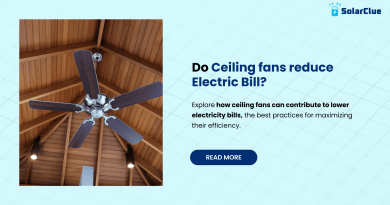how can i get solar panels for free
Table of Contents
- 1 Introduction
- 2 Understanding Different Types of Solar Subsidies
- 3 State-Wise Solar Incentives and Policies
- 4 Calculating Potential Savings with Government Subsidies
- 5 The Role of Government in Promoting Solar Energy
- 6 Tips for Maximizing Subsidy Benefits
- 7 Overcoming Challenges in Accessing Government Subsidies
- 8 The Future of Solar Subsidies and Incentives
- 9 Comparing Solar Subsidies with Other Financial Incentives
- 10 Case Studies of Successful Solar Panel Installations with Government Support
- 11 The Impact of Government Policies on Solar Panel Adoption Rates in India
- 12 FAQ Section
- 13 Conclusion
Introduction
The Indian government has been proactively encouraging the adoption of solar energy as part of its broader strategy to promote renewable energy sources and reduce carbon emissions. To make solar panel installations more affordable for individuals and businesses, the government offers various subsidies, incentives, and programs. This guide provides an overview of these opportunities, including eligibility criteria, subsidy amounts, and the application processes. We’ll also explore the concept of net metering and feed-in tariffs, as well as tips for maximizing the benefits of government support.
Understanding Different Types of Solar Subsidies
Central Government Subsidies:
- Overview: The central government, through the Ministry of New and Renewable Energy (MNRE), offers subsidies to reduce the cost of solar panel installations. These subsidies are particularly focused on residential and institutional installations.
- Subsidy Amount: Typically, the subsidy covers up to 40% of the cost for systems up to 3 kW and 20% for systems above 3 kW and up to 10 kW.
State Government Subsidies:
- State-Specific Initiatives: In addition to the central government’s support, many states offer additional subsidies or incentives. These vary widely depending on the state’s solar policies and goals.
- Example: States like Gujarat, Rajasthan, and Maharashtra offer additional financial support to make solar panel installations even more affordable.
Net Metering:
- Concept: Net metering allows solar panel owners to sell excess electricity back to the grid. When your solar panels produce more electricity than you use, the surplus is sent to the grid, and you receive credits that can offset your future electricity bills.
- Benefits: This system not only reduces your electricity costs but also ensures that you get the most out of your solar investment.
Feed-In Tariffs (FiTs):
- Overview: Under a feed-in tariff system, you are paid a fixed rate for the electricity your solar panels generate and supply to the grid. This rate is typically higher than the standard electricity price, providing an additional financial incentive.
- Application: FiTs are commonly used in large-scale solar projects but can also be applied to residential installations in some states.
State-Wise Solar Incentives and Policies
Maharashtra:
- Incentives: Offers a state subsidy in addition to the central government’s subsidy. Rural areas receive higher incentives to encourage solar adoption.
- Net Metering: Well-established net metering policies that allow consumers to offset their electricity bills.
Gujarat:
- Incentives: Known for aggressive promotion of solar energy, Gujarat provides high subsidies and has streamlined the application process.
- Solar Policy: The state offers incentives for both residential and commercial installations, with additional support for rooftop solar projects.
Rajasthan:
- Incentives: Rajasthan offers substantial subsidies due to its high solar potential. The state provides incentives for both grid-connected and off-grid solar installations.
- Policy Focus: Special focus on rural areas and agricultural applications to enhance solar adoption.
Calculating Potential Savings with Government Subsidies
Example Calculation:
- System Cost: Assume a 5 kW solar panel system with a total installation cost of INR 2,50,000.
- Central Government Subsidy (20%): INR 50,000
- State Government Subsidy (10%): INR 25,000
- Net Cost: INR 1,75,000
Savings Analysis:
- Annual Savings: If the system generates 7,500 kWh annually, and the electricity rate is INR 6 per kWh, the annual savings would be INR 45,000.
- Payback Period: With subsidies, the payback period for the investment is reduced to around 4 years, after which the electricity generated is essentially free.
The Role of Government in Promoting Solar Energy
Policy Initiatives:
- Targets and Goals: The Indian government has set ambitious targets for solar energy capacity under the National Solar Mission. These initiatives are supported by various subsidies and incentive programs.
- Public Awareness: Government campaigns are raising awareness about the benefits of solar energy, making it more mainstream and accessible.
Infrastructure Support:
- Grid Improvements: Investments in grid infrastructure are facilitating the integration of solar power, especially in rural and remote areas.
- Training Programs: The government is also promoting skill development programs to create a workforce capable of supporting the solar industry.
Tips for Maximizing Subsidy Benefits
Choose the Right Vendor:
- Empaneled Vendors: Ensure you select a government-approved or empaneled vendor for your solar installation to qualify for subsidies.
- Quality Installation: Opt for a vendor with a strong track record to ensure high-quality installation and maximize system efficiency.
Optimal System Sizing:
- Right Sizing: Install a system that meets your energy needs but also qualifies for the highest possible subsidy. Oversizing or undersizing can affect the financial returns.
Timing Your Application:
- Stay Updated: Keep an eye on government announcements regarding subsidy availability, as funds may be limited and released periodically.
- Early Application: Apply for subsidies as soon as you decide to install solar panels to avoid delays or missed opportunities.
Overcoming Challenges in Accessing Government Subsidies
Complex Application Process:
- Documentation: Ensure you have all required documents, such as property ownership proof, identity proof, and electricity bills, ready before applying.
- Vendor Assistance: Work closely with your vendor, who can guide you through the application process and ensure all forms are correctly filled out.
Approval Delays:
- Follow-Up: Regularly follow up with the authorities or your vendor to track the progress of your application.
- Local Offices: Engage with local renewable energy departments to expedite the verification and approval process.
Limited Awareness:
- Educate Yourself: Take the time to research the various subsidies and incentives available in your state.
- Consult Professionals: Seek advice from solar energy consultants or professionals who can provide insights into navigating the subsidy process.
The Future of Solar Subsidies and Incentives
Increasing Support:
- Enhanced Subsidies: As India pushes towards its renewable energy goals, subsidies and incentives may increase, with more focus on innovative technologies like battery storage.
- Broader Coverage: Future policies might extend subsidies to a wider range of consumers, including commercial and industrial sectors, to accelerate solar adoption.
Digitalization:
- Online Platforms: The government is likely to streamline the application process through digital platforms, reducing paperwork and approval times.
- Real-Time Monitoring: Integration of smart monitoring systems to track solar panel performance and ensure effective use of subsidies.
Comparing Solar Subsidies with Other Financial Incentives
Loan Programs:
- Subsidized Loans: The government offers subsidized loans for solar installations, making it easier to finance the initial cost.
- Comparison: While loans spread out the cost over time, direct subsidies reduce the upfront cost, making solar more immediately affordable.
Tax Benefits:
- Depreciation Benefits: Businesses can avail accelerated depreciation on solar assets, reducing their taxable income.
- GST Reduction: Reduced GST rates on solar components make installations more cost-effective.
Case Studies of Successful Solar Panel Installations with Government Support
Case Study 1: Residential Solar Installation in Gujarat:
- System Size: 3 kW
- Subsidies: Received 40% central government subsidy and 15% state subsidy.
- Outcome: The homeowner reported a significant reduction in electricity bills, with the system paying for itself within 4 years.
Case Study 2: Commercial Solar Installation in Maharashtra:
- System Size: 50 kW
- Subsidies: Benefited from both central and state government subsidies, along with a subsidized loan.
- Outcome: The business achieved substantial energy savings and a reduced carbon footprint, with a payback period of 5 years.
The Impact of Government Policies on Solar Panel Adoption Rates in India
Rapid Growth:
- Increased Installations: Government subsidies and incentives have led to a rapid increase in solar panel installations across India, particularly in residential and commercial sectors.
- Energy Independence: Many households and businesses have achieved significant energy independence, reducing their reliance on the grid and lowering electricity costs.
Sustainable Development:
- Environmental Benefits: The widespread adoption of solar panels is helping India reduce its carbon emissions and move towards a more sustainable energy future.
- Economic Growth: The solar industry is creating jobs and stimulating economic growth, particularly in manufacturing and installation sectors.
FAQ Section
- What is the central government subsidy for solar panel installations in India?
- The central government offers a subsidy of up to 40% for residential solar systems up to 3 kW and 20% for systems above 3 kW and up to 10 kW.
- Are there additional state-level subsidies available for solar panels?
- Yes, many states offer additional subsidies that can range from 10% to 20% of the installation cost, depending on the state’s policies.
- What is net metering, and how does it benefit solar panel owners?
- Net metering allows solar panel owners to send excess electricity back to the grid and receive credits, which can offset their future electricity bills, enhancing the financial benefits of solar panels.
- How do I apply for government subsidies for solar panels?
- The application process generally involves working with an empaneled vendor, submitting the required documentation, and following the steps outlined by the central and state governments.
- What challenges might I face when accessing solar subsidies, and how can I overcome them?
- Common challenges include a complex application process, approval delays, and limited awareness. To overcome these, ensure thorough documentation, follow up regularly, and consult professionals for guidance.
Conclusion
Government subsidies and incentives play a crucial role in making solar energy more affordable and accessible across India. By understanding the various schemes, eligibility criteria, and application processes, individuals and businesses can significantly reduce the cost of installing solar panels and contribute to a greener, more sustainable future. As India continues to promote renewable energy, the scope and benefits of these subsidies are expected to expand, offering even more opportunities for solar adoption across the country.



